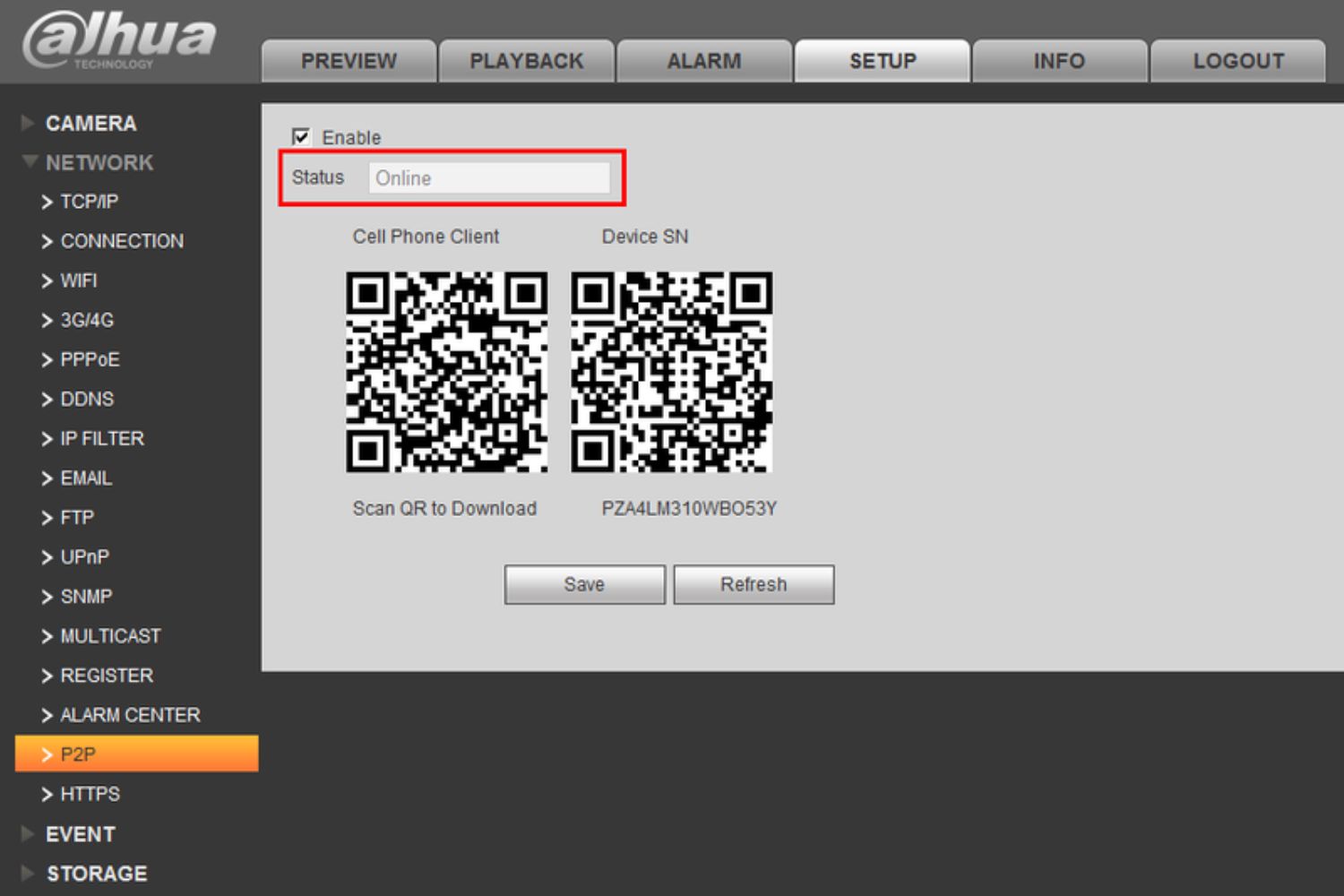Introduction
Welcome to the world of peer-to-peer (P2P) software, where sharing and collaboration take center stage. In this era of advanced technology and seamless connectivity, P2P software has emerged as a game-changer, revolutionizing the way we exchange files and information online.
P2P software, short for peer-to-peer software, enables users to share files directly with one another without the need for a centralized server. This decentralized approach has gained immense popularity over the years, as it allows for faster and more efficient file sharing compared to traditional client-server models.
In the past, the concept of P2P was primarily associated with illegal file sharing, which garnered a negative reputation. However, it is important to note that P2P software itself is not inherently illegal or unethical. In fact, there are many legitimate and valuable use cases for P2P software.
In this article, we will explore the world of P2P software, its functionality, advantages and disadvantages, different types available, as well as some popular examples. We will also touch upon the legal and ethical concerns associated with P2P software use.
Whether you are a tech enthusiast, a content creator, or simply someone curious about how this technology works, this article will serve as your comprehensive guide to understanding P2P software and its impact in the digital landscape. So, let’s dive in and uncover the fascinating world of peer-to-peer software.
Definition of P2P Software
Peer-to-peer (P2P) software refers to a class of applications that allow users to directly share files, resources, and information with one another over a network. Unlike traditional client-server models, where files are stored on a central server and accessed by clients, P2P software enables individuals to connect with each other and exchange data without the need for intermediaries.
At its core, P2P software relies on the principles of decentralization and distributed computing. Instead of relying on a single point of failure, such as a central server, files are distributed among multiple participants in the network, creating a mesh-like structure. Each participant, or peer, acts both as a client and a server, making resources available for others to access and consuming resources from others.
One of the primary benefits of P2P software is its ability to facilitate faster and more efficient file sharing. With traditional client-server models, downloading large files can be slow, as the server may become overwhelmed with numerous requests. In contrast, P2P software utilizes the collective resources of all participants in the network, allowing files to be downloaded from multiple sources simultaneously. This distributed approach not only speeds up downloads but also reduces the burden on individual servers.
It is important to note that P2P software can be used for a wide range of applications beyond file sharing. It can also be used for collaborative tasks, such as real-time collaboration on documents or sharing computational resources for complex calculations. P2P networking can even be integrated into communication systems like instant messaging applications, enabling direct communication between users without the need for central servers.
Overall, the defining characteristic of P2P software is its ability to create a network of peers who can share resources and information directly with each other. By harnessing the power of peer-to-peer technology, P2P software offers a decentralized and efficient means of collaboration and file sharing.
How P2P Software Works
P2P software operates on the principle of decentralized networking, where participants in the network, known as peers, interact directly with each other. Let’s explore the basic mechanics of how P2P software works:
1. Discovery and connection: To join a P2P network, a peer needs to discover and connect to other peers. This is typically done using either a centralized tracker or a decentralized distributed hash table (DHT). The tracker maintains a list of available peers, while the DHT distributes the responsibility of tracking peers across the network. Once connected, peers can exchange information, such as file availability or presence in the network.
2. File search and retrieval: When a user wants to access a specific file, the P2P software facilitates the search process. The software can perform searches based on various parameters, such as file name, type, or keywords. The search query is broadcasted to other peers in the network, and those with the requested file respond. Peers can negotiate and establish connections to initiate the file transfer.
3. File transfer: Once a connection is established between peers, the actual file transfer begins. P2P software breaks the file into smaller chunks or packets, and these packets are distributed among the participating peers. Each peer simultaneously uploads and downloads different parts of the file, creating a collaborative file-sharing process. This distributed approach not only speeds up the transfer but also ensures reliability and fault tolerance, as files can be downloaded from multiple sources simultaneously.
4. Seeders and leechers: In a P2P network, there are two main roles: seeders and leechers. Seeders are peers who have the complete file and are actively sharing it with others. Leechers, on the other hand, are peers who are currently downloading the file. Once a leecher successfully downloads the entire file, they can become a seeder and start sharing it with other peers.
5. Swarm dynamics: P2P software utilizes swarm dynamics, where a swarm refers to the group of peers involved in sharing a particular file. As the number of seeders and leechers changes dynamically, the swarm adapts accordingly. New peers can join the swarm and begin downloading from available seeders, while existing seeders can leave once their sharing goal is achieved. This dynamic nature ensures the resilience and scalability of P2P networks.
6. Network health and management: P2P software may implement various mechanisms to ensure network health and efficient resource utilization. These mechanisms include maintaining download/upload ratios, implementing bandwidth throttling, and prioritizing peers based on their reliability or contribution to the network.
In summary, P2P software enables direct peer-to-peer communication and file sharing without a central server. Through discovery, connection, file search, retrieval, and collaborative transfers, P2P software harnesses the power of distributed computing to facilitate efficient and decentralized sharing of files and resources.
Advantages of P2P Software
P2P software provides several advantages that have made it popular and widely used. Let’s explore some of the key benefits of utilizing P2P software:
1. Efficient file sharing: P2P software enables faster and more efficient file sharing compared to traditional client-server models. By distributing the workload among multiple peers, downloads become faster and can be performed from multiple sources simultaneously. This not only improves download speeds but also reduces the strain on individual servers, ensuring a smoother and more reliable file sharing experience.
2. Scalability: P2P networks are highly scalable since they leverage the resources of all participating peers. As more peers join the network, the overall capacity and availability of resources increase. This scalability is particularly beneficial when dealing with large files or high demand scenarios where a centralized server might struggle to handle the load.
3. Decentralization: P2P software operates in a decentralized manner, eliminating the need for a central server. This decentralized architecture offers several advantages, such as increased resilience, as there is no single point of failure. Furthermore, it bypasses the need for a central authority, allowing for greater freedom and autonomy for users.
4. Lower costs: P2P software can lead to significant cost savings, both for individuals and organizations. As the network participants share the burden of hosting and distributing files, there is less reliance on expensive server infrastructure. This cost efficiency is particularly advantageous for small businesses or individuals who do not have the resources to invest in dedicated servers.
5. Wider availability of content: P2P networks have a vast amount of user-generated content, making a wide variety of files accessible. These files can range from software applications and multimedia content to educational resources and research papers. The decentralized nature of P2P networks allows for the creation of vast libraries of content that would not be feasible in a centralized system dominated by a few content providers.
6. Upgradability and version control: P2P software allows for seamless updates and version control. Since files are distributed among multiple peers, updates to files or software can be easily propagated throughout the network. Peers can obtain the latest version of a file or software directly from other peers, eliminating the need for centralized update servers and ensuring everyone has access to the most up-to-date versions.
7. Collaboration and resource sharing: P2P software can be used for collaborative tasks, enabling real-time collaboration on documents or sharing computational resources for complex calculations. This collaborative aspect fosters innovation, knowledge-sharing, and teamwork among users, making P2P software a valuable tool for project collaborations and business environments.
Overall, the advantages of P2P software, such as efficient file sharing, scalability, decentralization, cost savings, wider content availability, upgradability, and collaboration capabilities, have contributed to its widespread adoption and continued relevance in the digital age.
Disadvantages of P2P Software
While P2P software offers numerous advantages, it is important to consider the potential drawbacks and limitations associated with its use. Here are some of the disadvantages of P2P software:
1. Lack of control and quality assurance: P2P networks rely on the participation of individual peers, which means that the quality and reliability of the shared content can vary. There is no central authority or control mechanism to ensure the accuracy, safety, or integrity of the files being shared. This lack of control can result in the presence of malicious or infected files, as well as poor-quality content.
2. Legal and ethical concerns: P2P networks have faced scrutiny due to the potential for copyright infringement and illegal file sharing. While not all P2P software is used for unauthorized sharing, it has been associated with such activities in the past. This legal ambiguity can lead to ethical concerns and potential legal repercussions for users who unknowingly download or share copyrighted materials.
3. Network instability: P2P networks are reliant on the participation of peers. If a significant number of peers leave the network or if the network lacks peers with the desired files, it can result in decreased download speeds and limited availability of resources. The dynamic nature of P2P networks can sometimes lead to unstable and unreliable connections.
4. Potential for security risks: Since P2P software relies on direct peer-to-peer connections, there is a higher risk of security vulnerabilities. Malicious peers may exploit these vulnerabilities to gain unauthorized access to systems or spread malware. Additionally, the decentralized nature of P2P networks makes it more challenging to track and identify malicious users or illegal activities.
5. Privacy concerns: P2P networks often require participants to reveal their IP addresses or share personal information. This can raise privacy concerns, as the identities and activities of participants can potentially be exposed. Users should exercise caution and ensure they are using secure and reputable P2P software to minimize privacy risks.
6. Limited support and updates: P2P software is often developed and maintained by a community of volunteers, which means it may lack regular updates, bug fixes, and user support compared to commercial software solutions. This can result in potential compatibility issues, vulnerabilities, or limited user documentation.
7. Bandwidth limitations and fairness: P2P networks rely on the contribution of individual peers to share files. This means that participants with limited bandwidth or slower internet connections may have a lesser ability to contribute, potentially creating an imbalance and impacting overall network performance. Ensuring fairness and equitable resource sharing can be challenging in P2P networks.
Despite these disadvantages, it’s important to note that not all P2P software experiences these issues to the same extent. Understanding the limitations and taking appropriate precautions when using P2P software can help mitigate these disadvantages and maximize the benefits it offers.
Types of P2P Software
P2P software comes in various forms, each catered to different purposes and functionalities. Let’s explore some of the common types of P2P software:
1. File-sharing P2P software: This type of P2P software is primarily used for sharing files between users. It allows individuals to upload and download files directly from other users in the network. Examples of file-sharing P2P software include BitTorrent, eMule, and FrostWire.
2. Collaborative P2P software: Collaborative P2P software focuses on enabling real-time collaboration and communication among users. It facilitates tasks such as document co-authoring, project management, and shared whiteboarding. Examples of collaborative P2P software include Groove (now Microsoft SharePoint Workspace) and OpenTalk.
3. Media streaming P2P software: This type of P2P software is designed for streaming multimedia content, such as movies, music, and live video broadcasts. It leverages P2P technology to distribute the streaming workload among the participants, resulting in improved scalability and reduced server costs. Examples include SopCast and Ace Stream.
4. Content delivery network (CDN) P2P software: CDN P2P software combines the benefits of P2P networks with traditional content delivery networks. It utilizes the resources of individual users to distribute content across the network, improving scalability and reducing bandwidth costs for content providers. Examples include BitTorrent Content Delivery and Swarmify.
5. Distributed computing P2P software: This type of P2P software harnesses the idle computational resources of participants in the network to solve complex problems or perform large-scale calculations. It allows users to contribute their computing power towards scientific research, data analysis, or distributed simulations. Examples include BOINC (Berkeley Open Infrastructure for Network Computing) and Folding@home.
6. Voice over IP (VoIP) P2P software: VoIP P2P software enables direct communication between users over the internet without the need for centralized servers. It allows for voice and video calls, instant messaging, and file transfers. Examples include Skype (early versions), Tox, and Jami (formerly known as Ring).
7. Blockchain-based P2P software: Blockchain technology has been integrated into P2P software to enable decentralized transactions, smart contracts, and secure data sharing. Examples include blockchain-based file storage platforms like IPFS (InterPlanetary File System) and blockchain-based content sharing platforms like FLO (formerly known as Alexandria).
It is important to note that these types of P2P software can overlap or have variations depending on their specific functionalities and features. Additionally, P2P software continues to evolve, and developers are exploring new ways to utilize peer-to-peer technology for various applications.
Whether it’s sharing files, collaborating on projects, streaming media, distributing content, or harnessing distributed computing power, P2P software offers a diverse range of capabilities to meet the needs of different users and industries.
Popular Examples of P2P Software
In the world of P2P software, several applications have gained popularity and have become widely used by individuals and organizations. Let’s take a look at some of the popular examples:
1. BitTorrent: BitTorrent is one of the most well-known and widely used P2P file-sharing protocols. It allows users to share and distribute large files efficiently by dividing them into smaller parts and downloading from multiple sources simultaneously. BitTorrent clients, such as uTorrent and qBittorrent, make it easy for users to connect to the BitTorrent network and download or upload files.
2. eMule: eMule is another popular P2P file-sharing application that operates on the eDonkey network. It offers a wide range of files, including multimedia content, software, and documents. eMule utilizes a decentralized file-sharing system where users can search for files and download them from other users in the network.
3. FrostWire: FrostWire is a multi-platform open-source P2P file-sharing application that allows users to share files across various networks, including BitTorrent, Gnutella, and Ares. It supports the download of diverse file types, including music, videos, applications, and documents. FrostWire also features a media player and offers a user-friendly interface.
4. Skype: While primarily known as a communication application, Skype utilized P2P technology in its early versions to enable voice and video calls, instant messaging, and file sharing between users. Although Skype has transitioned to a more centralized model, its early P2P architecture played a significant role in its initial success.
5. SopCast: SopCast is a P2P streaming application that allows users to watch live TV broadcasts, sports events, and other streaming content over the internet. By utilizing the P2P architecture, SopCast distributes the streaming workload among viewers, resulting in improved scalability and reduced bandwidth costs for content providers.
6. Spotify: While not strictly a P2P application, Spotify once utilized P2P technology to enhance its music streaming service. In the past, Spotify utilized a hybrid P2P model where users’ computers served as nodes in the network, sharing portions of songs they were listening to, thereby improving streaming efficiency and reducing server load.
7. BOINC: BOINC (Berkeley Open Infrastructure for Network Computing) is a distributed computing platform that uses P2P technology to harness the idle computational resources of volunteers. Users can contribute their computer’s processing power to various scientific projects, such as protein folding research, climate modeling, and space exploration simulations.
These are just a few examples of the popular P2P software that have garnered widespread use and have significantly impacted various aspects of digital sharing, communication, and collaboration. The dynamic nature of P2P software continues to evolve, and new applications and platforms are continuously being developed to meet the diverse needs of users around the world.
Legal and Ethical Concerns with P2P Software
While P2P software offers numerous benefits, it also raises certain legal and ethical concerns that users should be aware of. Let’s explore some of the notable concerns associated with P2P software:
1. Copyright infringement: P2P networks have been historically associated with illegal file sharing and copyright infringement. Individuals may use P2P software to distribute copyrighted materials without permission from the copyright holders, such as movies, music, software, and books. Engaging in such activities may lead to legal consequences as copyright laws aim to protect the rights of content creators and owners.
2. Unauthorized access and malware: P2P networks present the risk of unauthorized access to personal information and the potential spread of malware. Malicious individuals may exploit vulnerabilities in P2P software or disguise malware-infected files as legitimate content. Users should exercise caution and download files only from trusted sources to mitigate the risk of personal data breaches or malware infections.
3. Privacy concerns: P2P software often requires participants to disclose their IP addresses or share personal information. This can potentially compromise the privacy and anonymity of users. It is important to understand the privacy practices of the P2P software being used and consider additional measures, such as using VPNs (Virtual Private Networks), to enhance privacy and protect personal information.
4. Quality control and false information: The decentralized nature of P2P networks makes it challenging to ensure the accuracy and reliability of shared files. There is no central authority to verify the authenticity of information, and users may inadvertently download or share files of poor quality or misleading content. Users should exercise discretion and carefully evaluate the source and credibility of files being shared on P2P networks.
5. Network instability and participation imbalance: P2P networks rely on the active participation of peers for efficient file sharing. If a significant number of peers leave the network or if the network lacks peers with the desired files, it can result in decreased download speeds and limited availability of resources. Additionally, the imbalance in contributions among peers with varying bandwidths can create fairness concerns within the network.
6. Compliance with intellectual property laws: P2P software developers and operators need to ensure compliance with intellectual property laws, privacy regulations, and other legal frameworks. Failure to adhere to these laws and regulations can expose both individuals and organizations to legal risks and potential liabilities.
7. Ethical use of resources: P2P software relies on the voluntary participation and contribution of individuals. Ethical considerations arise when users exploit P2P networks for personal gain or engage in activities that drain network resources without providing a fair contribution in return. Users should strive to use P2P software responsibly and respect the interests of other participants in the network.
Understanding and addressing these legal and ethical concerns is crucial for responsible use of P2P software. Users should be mindful of their actions, adhere to copyright laws, prioritize privacy and security, and contribute to the network in a fair and ethical manner.
Conclusion
Peer-to-peer (P2P) software has transformed the way we share files, collaborate, and connect with each other in the digital age. Its decentralized architecture offers numerous benefits, including efficient file sharing, scalability, cost savings, and the ability to harness distributed computing power. P2P software provides a wide range of applications, such as file sharing, collaborative workspaces, media streaming, content delivery networks, distributed computing, and voice over IP communication.
However, it is important to remember the potential legal and ethical concerns associated with P2P software. Copyright infringement, unauthorized access, privacy risks, quality control, network instability, and compliance with intellectual property laws are some of the factors that warrant attention and responsible use of P2P software.
Despite the challenges, P2P software continues to evolve and play a significant role in facilitating sharing, collaboration, and innovation. Developers are constantly working to address the limitations of P2P software and enhance its security, privacy, and usability.
As users, it is essential to exercise caution, follow legal guidelines, and respect the rights of content creators and other participants in P2P networks. By being mindful of these considerations, we can continue to harness the power of P2P software in a responsible and ethical manner, promoting the exchange of ideas, resources, and knowledge in the digital landscape.

























